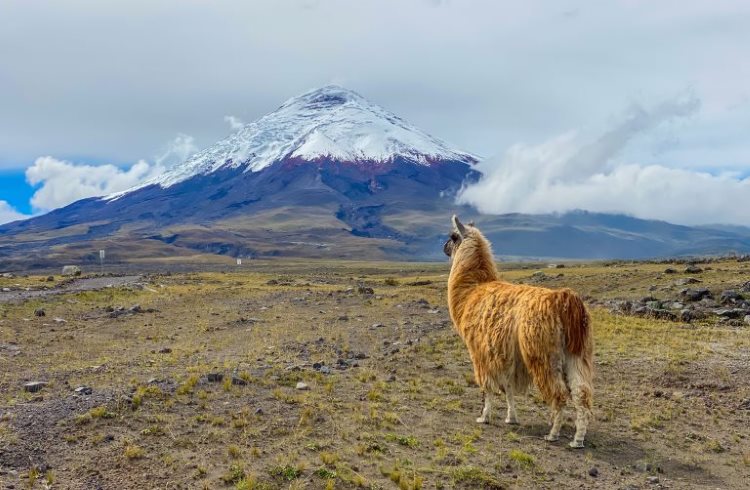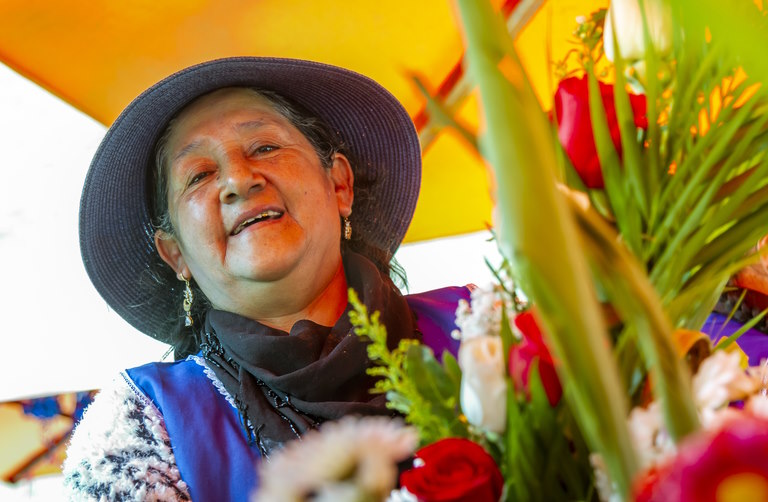5 Travel Tips to Know Before Visiting Ecuador
Planning a trip to Ecuador? Here’s what you need to know about when to go, what to pack, how to get around, and how to stay safe.
 Photo © Cassandra Brooklyn
Photo © Cassandra Brooklyn
Ecuador is a small country, about the size of Colorado, but it has a bit of everything: beaches, mountains, volcanos, metropolitan cities, the Amazon rainforest, and, of course, the extraordinarily diverse Galápagos Islands. During the month I spent in Ecuador, I experienced all of this, and it was one of the best trips I’ve ever taken. I can’t wait to go back.
Whether you’re planning a week-long vacation or you’re about to embark on a multi-month adventure, here’s what you need to know before traveling to Ecuador.
- Climate and weather in Ecuador
- Is Ecuador safe?
- Popular food in Ecuador
- Currency and travel costs in Ecuador
- How to get around
Climate and weather in Ecuador
Since Ecuador is situated along the earth’s equator (ecuador is Spanish for equator), the temperature is fairly consistent throughout the year, but does vary by region. Higher-elevation areas (such as Cotopaxi volcano and mountainous regions) can get chilly, so you’ll want to pack warmer clothes as well as those you’d need for a visit to the coast, Galápagos, or the Amazon. Ecuador’s cloud forest is wet, like the rainforest, but it’s also a bit cooler, so be sure to bring layers.
Along the Andes, February, March and April tend to be the wettest months while June, July, and August tend to be the driest. The southern coast and the Galápagos are sunniest and warmest from December through to May. The northern coast is best June to October. The Amazon doesn’t vary too much, and you should always expect rain, so pack a lightweight, waterproof jacket.
If you plan to do serious hiking, good trekking boots are recommended, but most visitors who aren’t trekking get by with comfortable walking shoes. I wore hiking sandals for easy hikes in Galápagos, but when I got to the rainforest and cloud forest, the hotels and attractions I visited provided knee-high rubber boots that not only provide protection from rain and mud, but also from snakes and other rainforest critters.
Is Ecuador safe? Altitude sickness, crime, and other concerns
Ecuador is a relatively safe country, and I felt very comfortable traveling as a solo woman. That said, check the US State Department advisory for the latest information on regions to avoid. Some of these regions include discouraging travel to Carchi, Sucumbíos, and Esmereldas in the north (the border region with Colombia) due to crime.
Like many countries, pickpocketing and other petty crime can be a problem, particularly in large cities such as Quito and Guayaquil. Wear your fanny pack or backpack on your front and keep your wallet and phone in front pockets. Robberies occasionally happen on overnight buses or in unlicensed taxis, so it’s best to travel during the day and only with reputable transportation companies.
Some parts of Ecuador (such as Quito and Cotopaxi) are high-elevation regions, which can put travelers at risk of altitude sickness. You’ll want to allow some downtime to acclimate before jumping right into activities.
Popular food in Ecuador
Ceviche (fresh, raw fish, cured in fresh citrus juice) is one of the most popular dishes in Ecuador – you’ll find it everywhere from street stalls and hole-in-the-wall restaurants to five-star hotels. Unlike Peru’s better-known “dry” version, Ecuadorian ceviche is served in a watery broth, typically consisting of lime juice and/or the liquid the seafood was prepared in. While shrimp and fish are the most popular versions, you’ll also find vegetarian ceviche made with hearts of palm or lupini beans (chocho). Regardless of the type of ceviche you order, it’s sure to come with a side of popcorn, tostado/choclo (Andean corn nuts), chifles (thin plantain chips), and/or patacones (thick green plantain chips). Ceviche accompaniments are so addictive that you may order a separate bowl as a side dish – or is that just me?

Another distinctive Ecuadorian dish is cuy asado, or roasted guinea pig, which is typically barbecued whole and found in regions across the Andes. Llapingachos – pronounced ya-peen-gah-chos – are fried potato (or yucca) patties stuffed with cheese and served with a peanut sauce, sausage, eggs, and salad. Ecuadorian food is not particularly spicy, but many restaurants have hot sauce on hand.
Currency and travel costs in Ecuador
Ecuador uses the US dollar as currency and the country tends to be less expensive than the United States, but it’s not exactly a budget destination. ATMs are available in major cities, but not in rural or isolated areas, so be sure to carry cash. Large companies and high-end hotels may accept credit cards, but many small businesses only accept cash.
Budget travelers can expect to spend about $40-50/day and mid-range travelers should expect to pay about $75-100/day. High-end travel varies widely, as luxury hotels and lodges can cost $200-500/night. Galápagos is the most expensive part of the country to visit, both in terms of activities, tour operators, and lodging, and also in terms of food, beverages, and souvenirs.
Nicer restaurants may add a 10% service charge to the bill, but if you don’t see the charge there, be sure to tip the server directly. If the service is great, add an additional 5% tip. Guides (for both group and private tours) expect to be tipped and rely on these tips, so budget in about $5-10/person per day for group tours and $10-20/day for private guides. Taxi drivers don’t typically expect tips, but always appreciate them.
How to get around
Uber is available (and affordable), as are public buses, which can transport you between cities. I used Uber several times for trips within Quito and took a shared van operated by Mashpi rainforest lodge to get to their resort.
Taxi Express makes runs in four-person cars between major cities for about $20-$30 each way and your hotel/host/guide should be able to make a reservation for you. Booking the service for a private run would cost about $80-100 one-way. I paid more for my trip from Quito to Tena (the gateway town to the Amazon) because I hadn’t yet learned about Taxi Express.
Should you choose to rent your own vehicle, Wi-Fi is widely available, so you could download driving directions before leaving your hotel.
Related articles
Simple and flexible travel insurance
You can buy at home or while traveling, and claim online from anywhere in the world. With 150+ adventure activities covered and 24/7 emergency assistance.
Get a quote


6 Comments